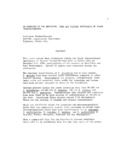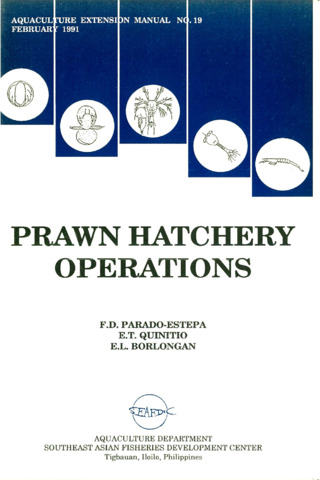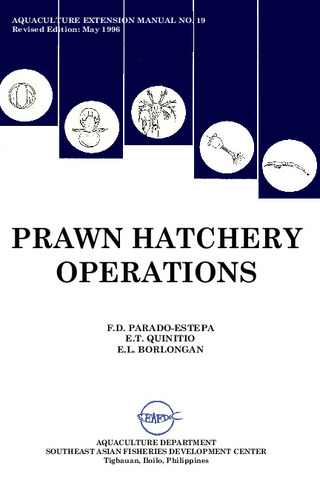| dc.contributor.author | Bañada, Vicente C. | |
| dc.contributor.editor | Taki, Yasuhiko | |
| dc.contributor.editor | Primavera, Jurgenne H. | |
| dc.contributor.editor | Llobrera, Jose A. | |
| dc.date.accessioned | 2012-04-20T03:41:08Z | |
| dc.date.available | 2012-04-20T03:41:08Z | |
| dc.date.issued | 1985 | |
| dc.identifier.citation | Bañada,V. C. (1985). Seasonal and local occurrence of adults and postlarval stages of Penaeus merguiensis and Penaeus indicus in Batan bay, Philippines. (Abstract only). In Taki Y., Primavera J.H. and Llobrera J.A. (Eds.). Proceedings of the First International Conference on the Culture of Penaeid Prawns/Shrimps, 4-7 December 1984, Iloilo City, Philippines (p. 176). Iloilo City, Philippines: Aquaculture Department, Southeast Asian Fisheries Development Center. | en |
| dc.identifier.isbn | 9718511008 | |
| dc.identifier.uri | http://hdl.handle.net/10862/889 | |
| dc.description | Abstract only. | en |
| dc.description.abstract | Studies on seasonal and local occurrence of adults (spawners) and postlarval stages of Penaeus merguiensis and P. indicus in Batan Bay and Banate Bay, Aklan yielded the following results: 1) small-sized P. merguiensis and P. indicus dominated the rivers and interior bays, 2) P. merguiensis and P. indicus spawners appeared throughout the year with varying monthly abundance in Batan Channel and Banate shoreline, and 3) larval stages of penaeids were found in interior bays but were more abundant in the channel and offshore areas. Postlarval stages of penaeids are more abundant along the shoreline than in water edges of mangrove swamps which indicate that channels and offshore waters may be primary spawning grounds while interior bays and rivers are secondary spawning grounds. Moreover, size distribution of carapace length of P. merguiensis suggests that the channel and offshore areas are utilized as primary spawning grounds while the inner portions of the bay are nursery grounds and secondary spawning grounds.
Lunar phase did not show a positive correlation with abundance of both spawners and postlarval P. merguiensis and P. indicus. The minimum size at sexual maturity for both male and female P. merguiensis is about 11 mm CL. Female P. indicus appear to become sexually mature at a smaller size (13 mm CL) than males (20 mm CL). | en |
| dc.language.iso | en | en |
| dc.publisher | Aquaculture Department, Southeast Asian Fisheries Development Center | en |
| dc.subject | Crustacean larvae | en |
| dc.subject | Distribution | en |
| dc.subject | Spawning population | en |
| dc.subject | Penaeus indicus | en |
| dc.subject | Philippines | en |
| dc.title | Seasonal and local occurrence of adults and postlarval stages of Penaeus merguiensis and Penaeus indicus in Batan bay, Philippines | en |
| dc.type | Conference poster | en |
| dc.citation.spage | 176 | |
| dc.citation.conferenceTitle | Proceedings of the First International Conference on the Culture of Penaeid Prawns/Shrimps, 4-7 December 1984, Iloilo City, Philippines | en |



